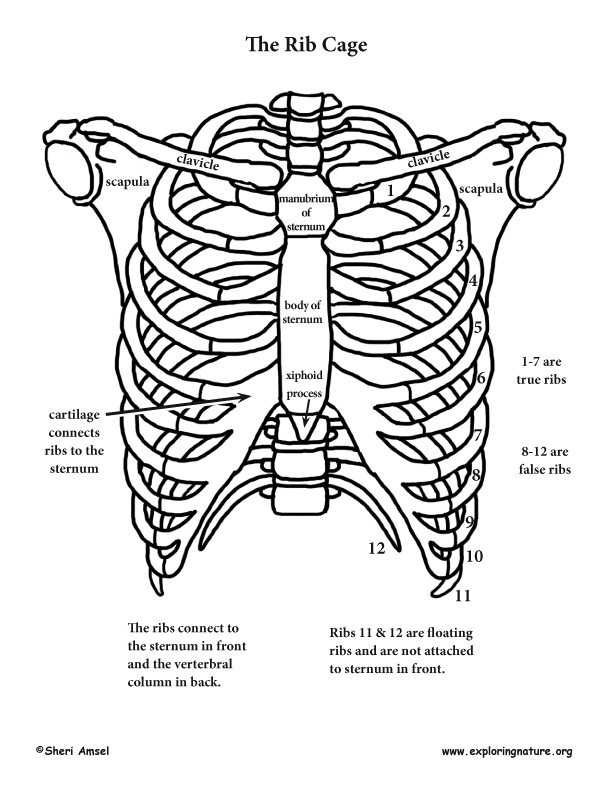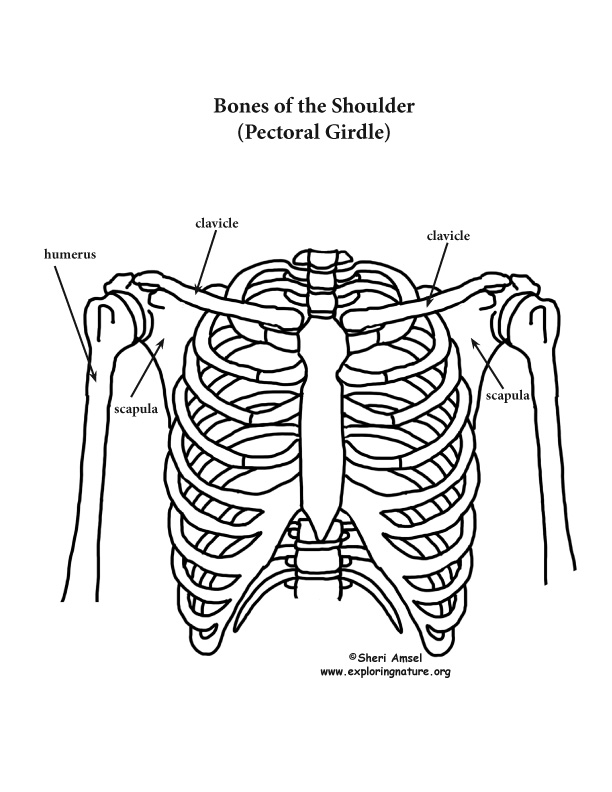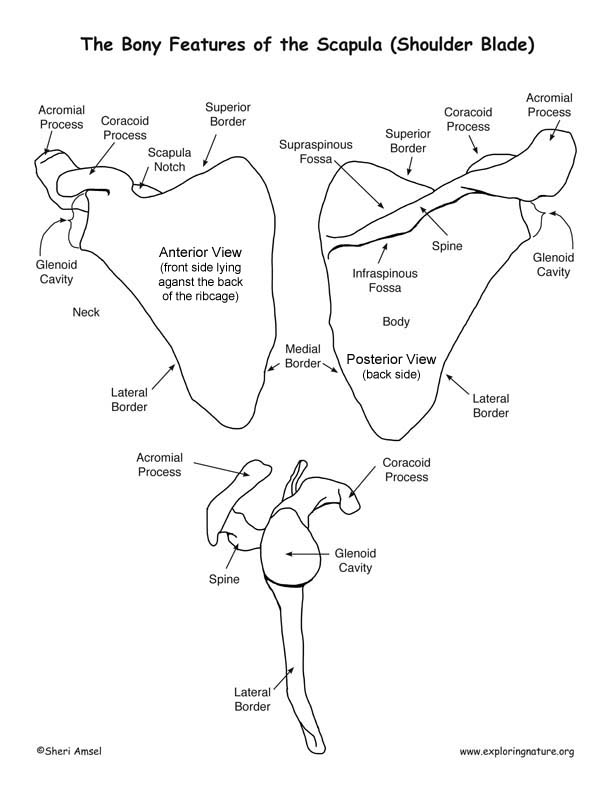

The rib cage (or thoracic cage) is made up of 12 pairs of curved ribs (24 ribs). They are all attached in the back to the thoracic vertebrae. The top 7 pairs are called true ribs and are attached right to the sternum (or breastbone) in the front. The bottom 5 pairs are called false ribs. The top 3 false ribs are connected to the sternum in front only by a cartilage bridge. The bottom 2 ribs don't attach in front at all! They are called floating ribs. Ribs are considered flat bones.
The function of the ribcage is to protect the heart and lungs. It also anchors important muscles that work the lungs during breathing (respiration). The diaphragm and intercostals muscles attach to the ribcage drawing it up and out when we inhale. (Inhale and feel your ribcage rise and grow). This expands the lungs (which are also attached to the ribcage through a double lining called the pleura) and brings air into the lungs (inhale). When the muscles relax, the ribcage sinks and gets smaller again and we breathe out (exhale).
Each shoulder (pectoral girdle) really only has 2 bones, the clavicle and the scapula. The clavicle (collar bone) sits right over the 1st rib and attaches from the top of the sternum out to the scapula. If you run your fingers out from the front of your neck to your shoulder, you are running it along the clavicle on each side. The scapula, a flattened triangle of bone that lays on the back on the ribcage, forms the shallow dish where the head of each arm bone (humerus) sites.
This joint's job is arm movement. It is a ball and socket joint, which gives the arm a great range of motion, but it also is not as stable as a hinge joint (like the elbow) and can get injured (dislocated) more easily. The shoulder joint is kept together (stabilized) by muscles and tendons forming what is called the rotator cuff.
When you research information you must cite the reference. Citing for websites is different from citing from books, magazines and periodicals. The style of citing shown here is from the MLA Style Citations (Modern Language Association).
When citing a WEBSITE the general format is as follows.
Author Last Name, First Name(s). "Title: Subtitle of Part of Web Page, if appropriate." Title: Subtitle: Section of Page if appropriate. Sponsoring/Publishing Agency, If Given. Additional significant descriptive information. Date of Electronic Publication or other Date, such as Last Updated. Day Month Year of access < URL >.
Amsel, Sheri. "Shoulder, Rib Cage, Scapula" Exploring Nature Educational Resource ©2005-2025. March 24, 2025
< http://www.exploringnature.org/db/view/Shoulder-Rib-Cage-and-Upper-Limb >



